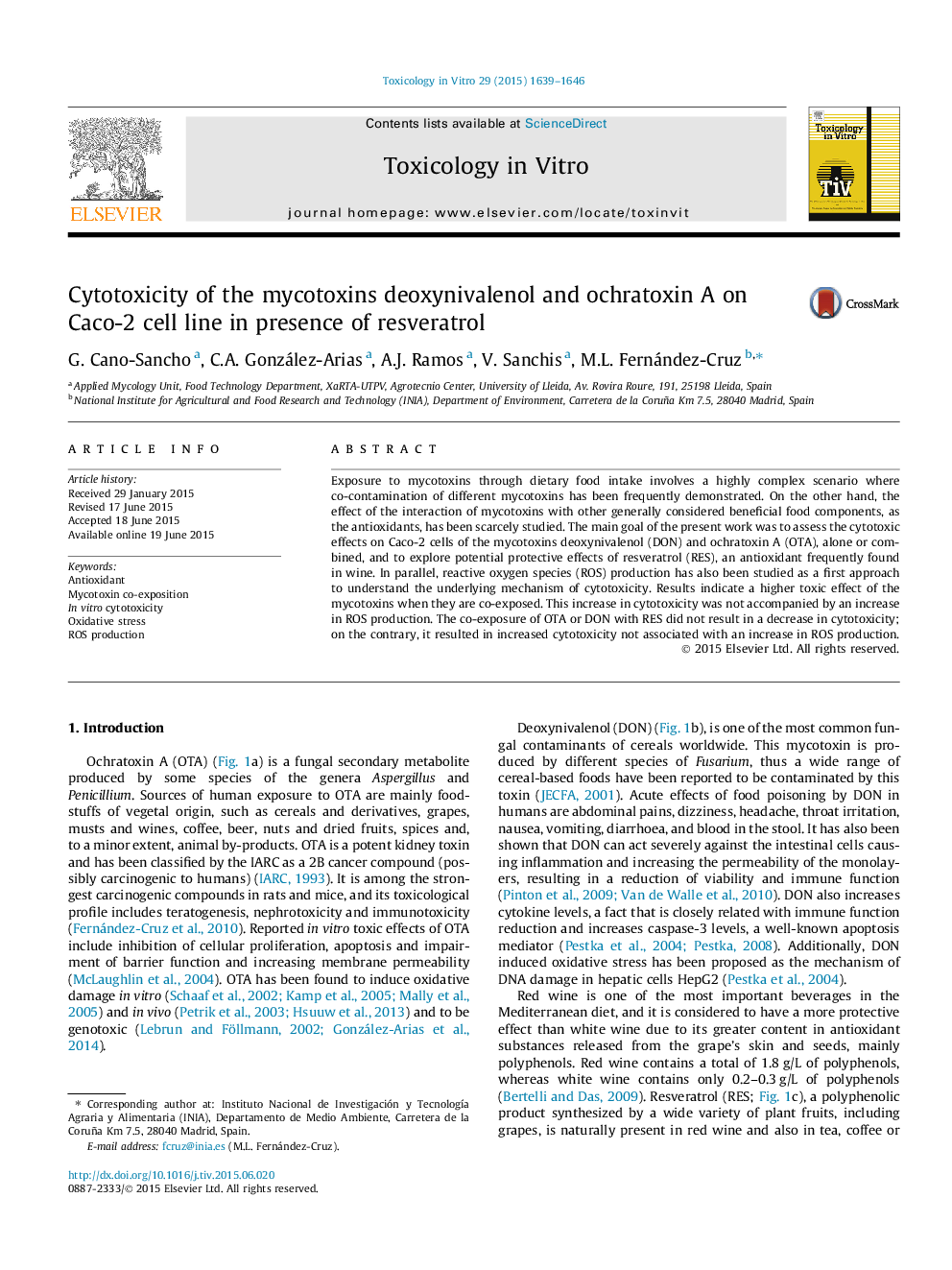| Article ID | Journal | Published Year | Pages | File Type |
|---|---|---|---|---|
| 5861398 | Toxicology in Vitro | 2015 | 8 Pages |
â¢Co-exposure to DON and OTA increased cytotoxicity on Caco-2 cells.â¢Cytotoxicity was not related to ROS production.â¢Resveratrol did not protect Caco-2 cells exposed to DON and OTA.â¢Resveratrol concentration decreased over time in presence of sodium bicarbonate.
Exposure to mycotoxins through dietary food intake involves a highly complex scenario where co-contamination of different mycotoxins has been frequently demonstrated. On the other hand, the effect of the interaction of mycotoxins with other generally considered beneficial food components, as the antioxidants, has been scarcely studied. The main goal of the present work was to assess the cytotoxic effects on Caco-2 cells of the mycotoxins deoxynivalenol (DON) and ochratoxin A (OTA), alone or combined, and to explore potential protective effects of resveratrol (RES), an antioxidant frequently found in wine. In parallel, reactive oxygen species (ROS) production has also been studied as a first approach to understand the underlying mechanism of cytotoxicity. Results indicate a higher toxic effect of the mycotoxins when they are co-exposed. This increase in cytotoxicity was not accompanied by an increase in ROS production. The co-exposure of OTA or DON with RES did not result in a decrease in cytotoxicity; on the contrary, it resulted in increased cytotoxicity not associated with an increase in ROS production.
